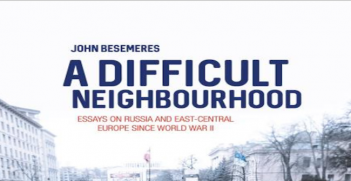Beyond South Asia: India’s Strategic Evolution and the Reintegration of the Subcontinent

Neil Padukone’s book is part of an increasing lexicon devoted to the evolution of India’s strategic thought since independence. The author avers that scholars and policy makers have propagated India’s lack of a coherent foreign policy and strategic thought and culture due to lack of co-ordination among different branches of the government and bureaucratic politics. However, the author attributes this to the deep-rooted ‘Dharmic philosophy’ that emphasises cyclical evolution of events, fatalism and nonlinearity. The book employs different schools of thought in international relations such as constructivism, liberalism and realism to examine the disparate features of India’s strategic thought and culture.
The book is divided into three parts. Part one deals with India’s ‘Monroe Doctrine’. The first goal of the doctrine was to ensure that the Indian sub-continent remained united and was to be achieved by not allowing countries in South Asia to be autonomous. The second objective was to ensure the absence of extra regional powers in the subcontinent. The author concludes that the ‘Monroe Doctrine’ has been a failure for internal and external reasons.
Part two focuses on the change in India’s strategic view due to the economic reforms in the 1990’s. India looked beyond South Asia into East Asia, West Asia, Central Asia and Africa for energy security, foreign direct investment and new markets for goods and services. It also focuses on India-US and India-China relations. The author asserts that a Sino-Indian border war is highly unlikely. He also avers that the US and India are natural allies because their national interests do not clash. However, Indo-US partnership might be thwarted by disagreements over issues of global governance, role played by Pakistan, the legacy of the Cold War and India’s expectations of US countering China in the political sphere.
Section three examines how the countries in the subcontinent perceive India’s new geostrategic posture. India wants stability in the region and seeks greater reconciliation and cooperation with South Asian countries to foster its economic growth and development. India is not willing to assume a belligerent attitude with respect to Pakistan despite numerous terrorist attacks especially the Mumbai attacks. The concluding section discusses the challenges facing India’s’ strategy in the near future. The author believes that permanent membership of the UN Security Council with veto power would limit India’s flexibility rather than increasing its power. Additionally, India’s policy of non-interference will have to change because other nations expect India to play a greater role in global affairs as India continues to rise and due to its interests and investments in other countries.
Along with many Indian writers, the author identifies a Chinese ‘string of pearls’ strategy of enhancing economic and trade facilities in countries in the sub-continent surrounding India. Contrary to author’s belief, China is not developing a naval base in Chittagong, Bangladesh and Seychelles.
The author’s assertion that India does not have an aggressive policy with respect to its South Asian neighbours is undermined by the economic blockade of Nepal in 2015. Similarly, India’s deep reservations and reactions to the visit of Chinese submarines to Sri Lanka in 2014 illustrates that India’s Monroe Doctrine is still an important element of its foreign policy in South Asia that will continue and will guide India’s strategic behaviour in the short and long term.
Moreover, the author is unable to establish causality with respect to India’s non-belligerent posture towards Pakistan despite the Mumbai attacks. The author fails to take cognisance of nuclear deterrence, the inability of the Indian military to implement ‘Cold Start Doctrine’ and achieve the desired objectives, external pressures and influences and lack of domestic consensus among others. The book is revealing to India’s interests and perceptions but sometimes there is a disconnect with reality.
The author has not discussed India’s soft power in detail. Soft power is an important element of India’s foreign policy. A cursory mention is made of how popular Bollywood is in Central Asia but the book would have been strengthened by authoring the steps taken by the Government of India to improve and strengthen India’s brand image globally. It also ignores the civilisational links between India and Southeast Asian countries and India’s historical and cultural relations with the region.
Readers should be cautious about some of the author’s assertions for instance, regarding the deployment of the USS Enterprise in the Bay of Bengal, the Ayni air base in Tajikistan and the ‘ASEAN +4’ grouping (rather than the ASEAN Regional Forum).
The book is an easy read but readers should be mindful of its limitations.
Neil Padukone, Beyond South Asia: India’s strategic evolution and the reintegration of the subcontinent, Bloomsbury, 2014.
Dr Raj Verma is an Assistant Professor at the School of International and Public Affairs at Jilin University in China and a Visiting Fellow at the Institute for Defence Studies and Analysis in India. This article is published under a Creative Commons Licence and may be republished with attribution.





